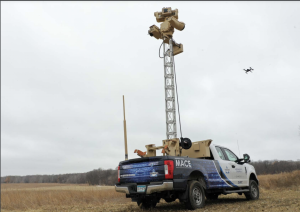
Northrop Grumman [NOC] provided reporters with details on its Mobile – Acquisition, Cueing and Effector (M-ACE) counter unmanned aerial systems (C-UAS) solution during a call on May 26. M-ACE uses three-dimensional radar, radio frequency sensors, electro-optical/infrared cameras, global position systems (GPS), and secure radios, according to Northrop. It was built with open architecture software to be capable of easily integrating with many sensors and cameras. It also uses man-in-the-loop autonomy through artificial intelligence and machine learning plug-ins. “What we're using…













